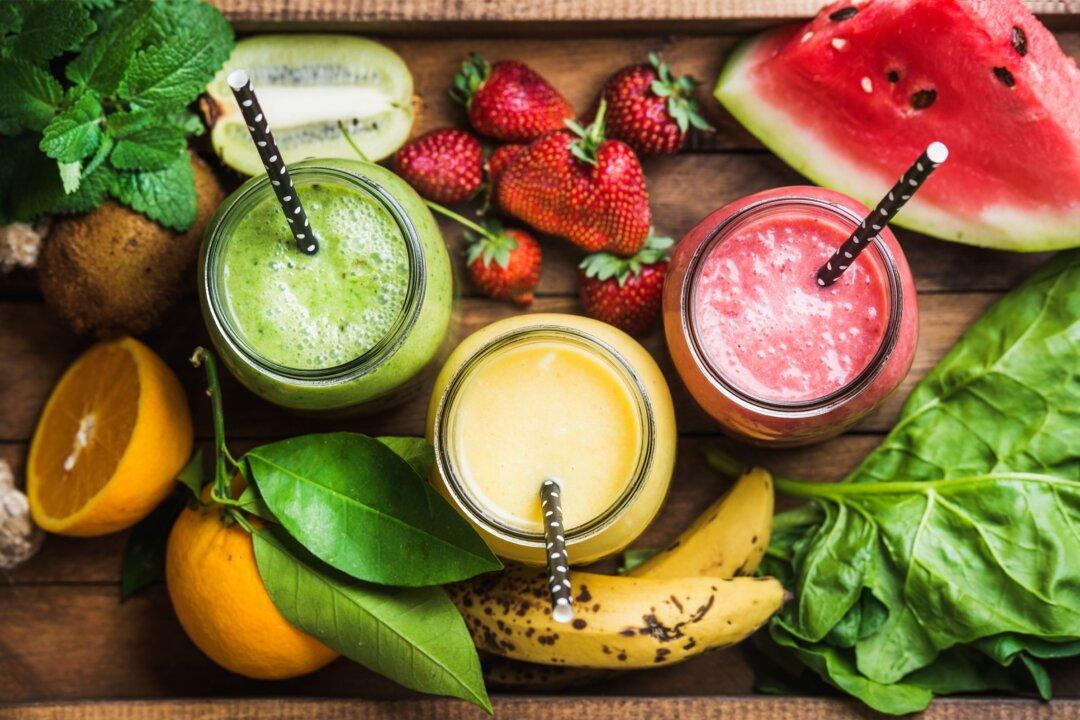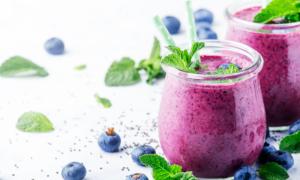In the morning rush, blending a smoothie feels like a shortcut to health—quick, convenient, and brimming with nutritional value. It’s a liquid gold rush of fruits, veggies, and other extras that promise to kick-start your day with an energizing boost.
5 Hidden Downsides of a Morning Smoothie
Generations have been raised on the adage to “eat your fruits and vegetables,” yet a report from the Centers for Disease Control and Prevention finds that the vast majority of Americans fall short of doing so.1. Sugar Spike
Many people don’t realize the potential sugar overload within smoothies. The allure of fruits, often the main ingredients, hides a less savory truth—an excess of natural and added sugars that can derail your day before it even begins.“People tend to view smoothies as inherently healthy, overlooking the sugar content that can be equivalent to or even exceed that of a soda,” Trista Best, a registered dietitian with a master’s in public health nutrition, told The Epoch Times.
Such elevated sugar levels can lead to immediate spikes and subsequent crashes in blood sugar, inducing irritability, anxiety, and tremors. Furthermore, they pose risks of weight gain, obesity, and a heightened chance of Type 2 diabetes due to insulin resistance and impaired glucose regulation.
2. Fiber’s Fine Line
Although it’s well-understood that juicing strips away the essential fiber from fruits, the effects of blending on fiber content are less clear-cut.Ms. Best said, “Blending a smoothie typically does not significantly alter the fiber content of the ingredients used.” She said that blending retains the valuable fiber in the skins, seeds, and pulp, potentially enhancing fiber’s digestibility by reducing it to smaller particles.
Dr. Lustig raises concerns that blending might disrupt this fiber balance, eroding the barrier and diminishing the health benefits of fruits.
3. The Satiety Factor
The allure of a quick, liquid breakfast may be enticing. However, Ms. Best warns, “Opting for a smoothie-only breakfast can lead to mindless eating and potentially reduced satisfaction compared to solid food alternatives.”The act of chewing plays a crucial role in our digestive process and satiety response. “This process activates the satiety mechanisms, helping you feel more satisfied and reducing the likelihood of overeating later on,” Ms. Best said.
“Drinking a smoothie bypasses the chewing process, which may result in decreased satiety signals to the brain.” Ms. Best said. This can accelerate meal consumption, detract from the enjoyment of eating, and increase tendencies toward snacking or unplanned eating throughout the day.
4. Oxalate Overload
Beyond the fruit content, the vegetables commonly incorporated into smoothies can pose additional health risks. Chris Kresser, a functional medicine expert, highlights on his website a notable issue with green smoothies—their potential high oxalate levels. Oxalates are natural plant compounds that, when consumed in large amounts, may lead to kidney stones and inflammatory conditions in susceptible individuals.The concern escalates with the frequent use of ingredients such as spinach, chard, and beets—vegetables celebrated for their high nutritional value but also notorious for their oxalate content. Over time, an accumulation of these compounds could trigger a spectrum of adverse health outcomes, including chronic pain, kidney stones, and even neurological or fibromyalgia-related symptoms.
5. Microbial Overload
Smoothies may carry unnoticed hazards due to the concentrated form in which their ingredients are consumed. Ordinarily, consuming fruits and vegetables in moderation permits our natural defenses, including stomach acids and the immune system, to manage and neutralize any accompanying bacteria, parasites, and chemicals such as pesticides. However, this balance is disrupted by the high volumes ingested through smoothies.Even organic raw fruits and vegetables are not devoid of bacteria and parasites. Although our bodies typically manage these potential threats, the concentration of raw produce in a single smoothie introduces many microorganisms, possibly overwhelming our defenses. The stark difference in risk between eating a single banana and the equivalent of three in a smoothie form underlines this concern, with the latter markedly amplifying our exposure to these pathogens.
The research proposed a viable precautionary measure—cleansing ingredients in a silver and hydrogen peroxide solution to decrease bacterial levels substantially. Thoroughly washing ingredients, peeling when feasible, and even slightly cooking certain vegetables can help alleviate the stowaway problem all help ensure that our nutritional endeavors do not inadvertently endanger our health.
Enhancing Your Morning Smoothie for Optimal Health
Smoothies can serve as a potent source of essential nutrients to jump-start your day. Yet navigating the fine line between a sugary treat and a healthful breakfast requires mindful adjustments.He said, “Use your mouth and your teeth the way nature intended and put the smoothies aside or have them just as treats.”
Nonetheless, several modifications can elevate this beverage into a balanced and nutrient-rich meal for those devoted to their smoothie routines.
Prioritize Protein
Protein is integral for muscle repair and growth and also enhances satiety. Incorporating a scoop of your favorite protein powder, Greek yogurt, or silken tofu can elevate the protein content, making your smoothie a substantial meal replacement.Incorporate Healthy Fats
Adding avocados, chia seeds, or a dollop of nut butter enriches the texture of a smoothie, boosts heart health, and aids in nutrient absorption. These additions ensure your smoothie keeps you fuller for longer, mitigating the urge to snack prematurely.Eliminate Added Sugars
Despite the temptation to sweeten your smoothie with honey or maple syrup, the natural sugars from fruits suffice. For those seeking extra zest without the sugar spike, spices such as cinnamon or vanilla extract can serve as flavorful alternatives.Focus on Low-Sugar Fruits
Grapes, cherries, and bananas are rich in sugar, and berries and citrus fruits generally contain less. Choose your smoothie ingredients carefully to maintain a balanced sugar content.Craft Your Smoothie at Home
Taking control of your smoothie’s composition is crucial. Many pre-bottled options on the market are laden with sugar. Homemade smoothies allow for tailored nutrition without unnecessary additives.Emphasize Greens Mindfully
Green smoothies are an excellent way to get a nutrient boost. Yet diversifying your selection of greens and allowing for days without smoothies to enjoy other nutritious foods is crucial for a well-rounded diet.Wash Your Produce
Wash fruits and vegetables before blending to minimize exposure to bacteria and pesticides, ensuring a safer and healthier smoothie experience.Adhering to these recommendations transforms your morning smoothie from a fast and easy convenience into a cornerstone of a healthy, balanced diet that sustains you throughout the morning.








